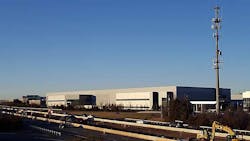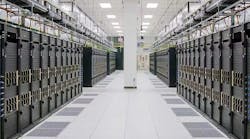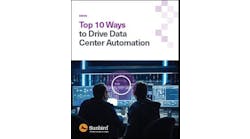Today we continue our Data Center Executive Roundtable, a quarterly feature showcasing the insights of thought leaders on the state of the data center industry, and where it is headed. In today’s discussion, our panel of experienced data center executives – Jeff Klaus of Intel DCM, David Knapp of Chatsworth Products, Sean Icara from Digital Realty, and Vertiv’s Gary Niederpruem – how the focus on speed to market is affecting the data center supply chain.
The conversation is moderated by Rich Miller, the founder and editor of Data Center Frontier.
Data Center Frontier: The largest cloud platforms are seeking to deploy data center capacity at an accelerated rate. What has this meant to the supply chain for data center delivery?
GARY NIEDERPRUEM of Vertiv
Gary Niederpruem: Cloud providers are deploying data center capacity in a number of ways. Sometimes they’re building in greenfield sites. Sometimes they retrofit existing facilities. Some are using colocation. A growing trend is the deployment of computing capacity at the edge, creating a distributed cloud network that can reduce network latency by managing loads closer to consumers.
That sort of unpredictability presents challenges across the supply chain. You can manage that unpredictability in three ways:
- Strive to know your customers and their plans intimately. That allows you not only to react quickly when they make a decision, but to be involved in that decision and help them plan and grow in ways that meet their needs today and prepare them for the unexpected tomorrow.
- Design solutions with modularity, flexibility and speed in mind. This allows technology providers to move as fast as – and in many cases faster than – their customers.
- Streamline the supply chain and service capabilities to make them flexible and nimble. For example, Vertiv is a large, global company, and we work daily to make sure that reach is an asset rather than an impediment to speedy delivery. When customers have urgent needs anywhere in the world, well-prepared global service teams can meet those needs with the appropriate resources and expertise almost immediately.
DAVID KNAPP of Chatsworth Products
David Knapp: Traditionally, the data center was fitted with racks, the network was cabled and then computers installed. All were separately sourced and separately installed.
For cloud, the basic design concept is standard, modular building blocks, focused at the rack- or row-level, instead of individual components. Cloud operators use integrators to deliver a complete rack full of equipment, preconfigured, cabled and ready to power. To do so, most operators have standardized on a few compute configurations and specific rack configurations. Facebook even shared those designs in The Open Compute Project (OCP), which is now also a separate marketplace.
For facilities, this means overhead cable tray and ductwork for airflow management, which is still sourced traditionally as construction materials, is installed ahead of racks. This speeds deployment because the facility is fitted in parallel to the compute being configured, instead of the traditional serial approach.
SEAN IRACA, Digital Realty
Sean Iraca: Cloud service providers are evolving their architectures and infrastructures to support the high growth and performance demands, resulting in larger colocation demands across all of the architectural layers of their infrastructure. This is blurring the traditional lines between scale and colocation, creating net-new opportunity for datacenter providers
Additionally, as enterprises look to leverage the advantages of cloud-based services, infrastructure that has traditionally been hosted in basements is being redeployed in colocation facilities that provide the security and close proximity required to utilize cloud services. This is changing the way customers are utilizing datacenter infrastructure to help transform their IT infrastructure and there is increased reliance on cloud computing. As IT adoption turns cloud from an option to a critical asset, this is driving increased requirements for secure, high performance and reliable access to those cloud environments.
JEFF KLAUS of Intel
Jeff Klaus: Two results of this immediately come to mind. First, it squeezes the existing market. Second, it changes how aggressive groups have to be in site selection and technology decisions.
We can also see more concentrated effects to industries like DCIM, where this accelerated deployment timeline has required an expedited decision making process, especially when it comes to choices and direction around hardware purchases, installation, and management.
RECAP: The Data Center Frontier Executive Roundtable, 1Q 2017
Keep pace with the fact-moving world of data centers and cloud computing by following us on Twitter and Facebook, connecting with me on LinkedIn, and signing up for our weekly newspaper using the form below:






